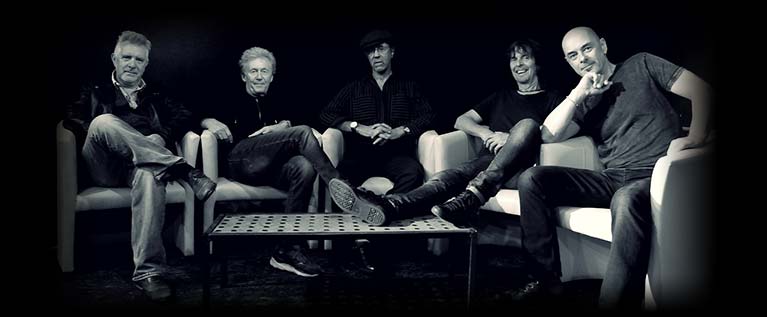Press and promotional queries to Diane Hinds ( info@timbre.co.uk )
Overture
At the end of the High Street in Worcester stands a statue of Sir Edward Elgar, Bart., O.M., C.H., G.C.V.O., Master of the King’s Musick. Its gaze is fixed on the splendours of Worcester Cathedral, scene of many of Elgar’s triumphs and an emblem of the England that the composer’s music now seems so strongly to embody.
Walk down the High Street, away from the Cathedral, and the bronze statue and your steps are taking you back in time, towards Elgar’s youth, when fame and fortune seemed beyond the reach even of dreams.
A short way along the street, now disfigured by the shopping precinct which swept away the Worcester Elgar knew, you pass the site of the old music shop at No 10, owned by William H. Elgar. To eke out his living, Mr Elgar took on the job of organist at St George’s Roman Catholic Church. Carry on down the High Street and, far from the Cathedral at the other end of the city, you will find the church. It still looks very much as it did when Mr Elgar took on the organist’s post in 1842.
Mr Elgar was not particularly devout. The Jesuit clergy who ran the parish went in for long sermons and it was not unknown for the organist to escape to the nearby inn for a swift pint, timing his return just as Mass was to continue. He must have been doubly content when, in 1873, his 14-year old son Edward was officially appointed assistant organist.
Edward had already been proving himself useful for some time, playing the organ, copying out hymns and all the other tedious jobs that have to be done in a choir loft. All the choir’s music – from simple hymns to Mass settings by Haydn, Weber and Hummel – was performed from ‘part books’: that is, each part, soprano, alto, tenor and bass, had only its own line rather than a complete score.
Act I – Hear Thy Children
Now the story moves forward almost a century. In London a package of music manuscripts comes up for sale. It is suggested that some of them contain music by Elgar, written in his own hand. The collection is bought by the celebrated rock musician Manfred Mann, curious as to what this might contain. After some time, he places the manuscripts in the hands of Elgar experts. The story that emerges is revelatory.
The manuscripts turn out to be 12 of the original hymn part-books from St George’s Church in Worcester, dating from 1878. This is the time when Edward Elgar was still assisting his father. Six of the 12 hymns appear to be in Elgar’s hand. Nothing strange there – he would have been expected to take his share of copying.
Edward was doing more than odd jobs, however. Three of these six hymns have been identified beyond doubt as original works by the young Elgar. They are: “Praise Ye The Lord: On Ev’ry Height”, “Now With The Fast-Departing Light” and, most significantly, a hymn called “Hear Thy Children, Gentle Jesus.”
This latter hymn tune, given the name “Drake’s Boughton” when it was published in 1896, was to become deeply meaningful for Elgar in later life. Looking back on it from the perspective of old age, he recognised in it one of the early seeds of his burgeoning creativity. In 1930, old and disillusioned, Elgar wrote a number of works in which he drew upon themes from his youth. He reached back half a century to find his old hymn tune and incorporated it into his “Nursery Suite.” It ‘should call up memories of happy and peaceful awakenings’, he wrote.
Here, then, in this simple but characteristically Elgarian hymn tune, hidden in a pile of dusty part-books, we find one of the first authentic expressions of the Elgar spirit.
Two other hymns, ”Hail Queen Of Heaven The Ocean Star” and ”Jesus My Lord” are almost certainly harmonisations by Elgar of traditional hymn tunes.
Act II – A New Voice Is Lifted Up
These three original Elgar hymns and the remaining nine (some familiar, some not) already begin to fill out the picture of what the music-making was like at St George’s in the 1890s. With this chink of light illuminating the emergence of a unique composer’s voice, the temptation to push on the opening door is irresistible.
The music archive from St George’s is now in the care of the Jesuits at Farm Street church in London’s West End. Other related material is held in the archive of the Elgar Birthplace Museum at Lower Broadheath, just outside Worcester. With the help of such material we can pick up the slender thread of these hymn settings and follow it through.
In the year of the hymn composition, Elgar composed a Magnificat, a Tantum Ergo and a Domine Salvum Fac for the services of Vespers and Benediction on the occasion of the solemn dedication of a new sanctuary. He was to compose several settings of the Benediction hymns O Salutaris Hostia and Tantum Ergo.
Among many such works is a set of four-part Litanies of the Blessed Virgin Mary. These are dedicated to Father Thomas Knight, S.J. Father Knight more than repaid the gift. In 1889 he gave Edward a wedding gift: a copy of a poem by the great Catholic churchman, Cardinal John Henry Newman. The poem was called “The Dream of Gerontius” ..
We can see the contrast between Elgar’s situation at St George’s and that at the Cathedral at the far end of town. Remember, Elgar’s parish church had been built only shortly after the early 19th century restoration of the Catholic hierarchy in England. Catholics were still banned from many of the professions and widely held in suspicion. The social gulf between William Elgar and his son and the Cathedral Organist and his Assistant Organist is difficult now to understand, but it should not be underestimated. Elgar senior, after all, was ‘in trade.’ When he visited the houses of the gentry to tune their pianos it was the tradesman’s entrance he would have used.
This throws into sharp relief the journey that Elgar travelled from such humble beginnings to a position as the pre-eminent English musician of the age. In this music, and in the circumstances of its composition, we can experience the first, confident steps in that journey.
Finale – “O Perfect Love”
Elgar succeeded his father as Organist at St George’s. It was just part of an energetic schedule of musical activities which also included teaching and playing the violin. With his marriage, his circle of friends grew wider for his wife moved in circles to which had had little access. In 1889 Elgar gave up the post of organist, after which he would compose but little more music for the Catholic liturgy.
There is one postscript, however. In the Elgar Birthplace Museum archive there lies a small sheet of manuscript paper on which is written, in Elgar’s hand, a four-part setting of the hymn “O Perfect Love.” Unlike the other Elgar hymns in the St George’s collection, it does not bear his usual indication “Edw.E”: instead, also in his hand, there is inscribed the name “Alice Stuart Wortley” and the date June 22 1914.
The sheet of paper is a precious link between Elgar the church composer and Elgar the man. Alice Stuart Wortley was no less than Elgar’s ‘Windflower,’ the inspiration for his Violin Concerto. Almost certainly she was also the love of his life. Alice, herself an able musician, had attempted a setting of the hymn for a niece’s wedding. Unsure of herself, she sent it to Edward for correction. This little manuscript is Elgar’s correction – we do not know how much it varies from Alice’s attempt. The hymn obviously went well, for on 16 July Elgar wrote to her ‘I am so glad the hymn tune went well. I am sure no-one could help loving it – perhaps not so much as I do.’
Postlude
From this story, we have compiled a programme built around the three original hymns from the St George’s part-books and the two almost certainly harmonised by Elgar. It also includes a number of the original works composed by Elgar for the Catholic liturgy at St George’s and some youthful experimental works for choir and organ. The programme concludes with Alice Stuart Wortley’s “O Perfect Love.”
It is a moving and insightful glimpse into the early years of a great artist.
The recording has been made by the Chapel Choir of the Royal Hospital Chelsea, (home of the Chelsea Pensioners), which very likely replicates the style and size of choir Elgar knew well at St George’s, which for much of its time probably consisted of male and female voices.
Traffic noise sadly rules out recording at St George’s – instead, the recording has been made in the excellent acoustic of Sir Christopher Wren’s beautiful Chapel at the Royal Hospital Chelsea.
John Kehoe




